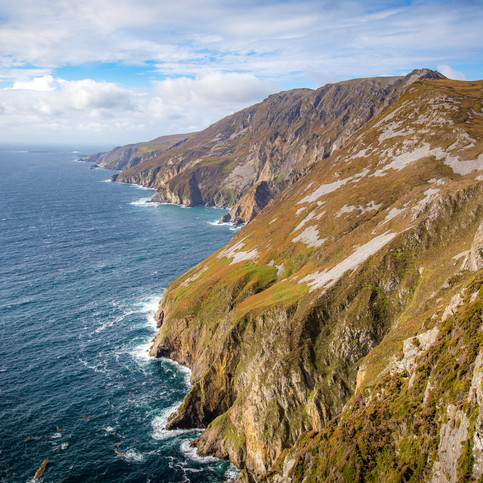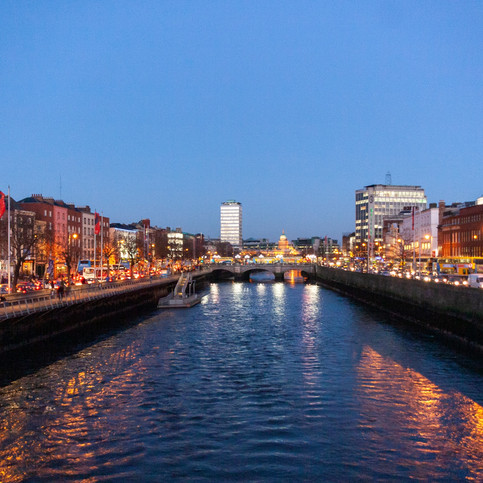Climate change in Ireland is a growing concern. The Irish government has acknowledged the need to take action on climate change, and has set ambitious targets for reducing greenhouse gas emissions. However, progress towards these targets has been slow, and Ireland is currently not on track to meet its goals.
There are a number of reasons why climate change is of particular concern in Ireland. First, the country is already experiencing the effects of climate change, with more extreme weather events such as floods and storms becoming increasingly common. Second, Ireland is highly dependent on agriculture, which is vulnerable to the impacts of climate change. Third, Ireland has a large tourism industry, which could be adversely affected by climate change-related phenomena such as sea level rise and increased temperatures. While the Irish government has taken some action to address climate change, more needs to be done.
Carbon Footprint in Ireland
Ireland’s carbon footprint is one of the highest in Europe. This is largely due to the country’s dependence on fossil fuels for electricity generation. In 2016, nearly three-quarters of Ireland’s electricity came from natural gas and oil, with coal accounting for another 18%. Renewables accounted for just 6% of electricity generation. Transportation is another major contributor to Ireland’s carbon footprint. In 2015, road transportation accounted for over 60% of total transport emissions. The majority of these emissions came from light-duty vehicles, such as cars and vans.
Agriculture in Ireland
Agriculture in Ireland is increasingly affected by climate change. The sector is already struggling with the effects of extreme weather, such as floods and droughts. Climate change is likely to exacerbate these problems, as well as posing new challenges, such as increased pressure on water resources. Agriculture is also one of the most emissions-intensive sectors in Ireland, accounting for nearly a quarter of total emissions in 2015. This is largely due to livestock farming, which produces methane gas – a powerful greenhouse gas.
Tourism in Ireland

Ireland’s tourism industry could be adversely affected by climate change. The country has a long coastline, which makes it susceptible to sea level rise and more extreme weather events such as storms and floods. In addition, Ireland is a popular destination for winter sports, which could be affected by reduced snowfall and shorter winters.
Weather & Climate Change
Climate change has negatively affected weather patterns in Ireland. More extreme weather events have been observed, such as heavy flooding and powerful storms. On the other hand, some regions of Ireland are experiencing warmer temperatures and longer summers.
Climate Change in Dublin
Dublin is facing a number of challenges due to climate change. The city is experiencing more extreme weather events, such as flooding and storms, which are damaging infrastructure and causing disruption to residents. In addition, Dublin is home to a large number of historical buildings and monuments which are at risk from the effects of climate change. The city is also struggling to cope with the increased demand for public transport and other services caused by population growth.

Wildlife in Ireland
Wildlife in Ireland is under threat from the effects of climate change. Rising temperatures and changes in rainfall patterns are already having an impact on Ireland’s plants and animals. Many species are struggling to adapt to their new environment, and some are at risk of extinction. Climate change is also causing problems for farmers, as crop yields are being affected by the changing weather conditions.
Irish Climate Action Plan
The Irish Climate Action Plan aims to reduce greenhouse gas emissions by at least 80% by 2050 compared to 1990 levels. To achieve these targets, the government will need to take a number of steps, including investing in public transport and renewable energy sources, reducing waste production and increasing awareness about climate change among citizens. It is clear that Ireland must tackle climate change if it is to maintain its economic prosperity and protect the environment for future generations.
Climate Change Mitigation
Climate change mitigation is one of the key measures that the Irish government can take to address climate change. By reducing greenhouse gas emissions, we can slow the rate of global warming and help to prevent some of the most damaging effects of climate change. There are a number of strategies for mitigating climate change, including carbon credits and carbon offsets.
Carbon Credits
Carbon credits involve purchasing emissions allowances from another country or company in order to compensate for your own emissions. This allows countries or companies that have reduced their emissions to sell the remaining allowances they do not need, thereby generating income for themselves. In contrast, carbon offsets are investments made in projects that reduce or absorb greenhouse gases elsewhere, such as by planting trees or investing in renewable energy sources.
While both carbon credits can be effective strategies for mitigating climate change, it is important to ensure that the projects supported by these programs are truly carbon-reducing. Ultimately, action on climate change must involve all sectors of society if we are to achieve meaningful results. Individuals and businesses must do their part by reducing their own carbon footprints and seeking out sustainable practices. At the same time, governments must take strong regulatory measures and invest in green technologies in order to reduce national emissions levels.
Voluntary Carbon Offsets
Voluntary carbon offsets (credits) on the other hand, are a way for individuals and businesses to “offset” their emissions by investing in carbon-reducing projects. This could involve planting trees, investing in renewable energy sources or energy efficiency measures. The key difference between the two is that carbon credits are a way of “trading” emissions allowances, while carbon offsets are investments made in projects to reduce or absorb greenhouse gases.

